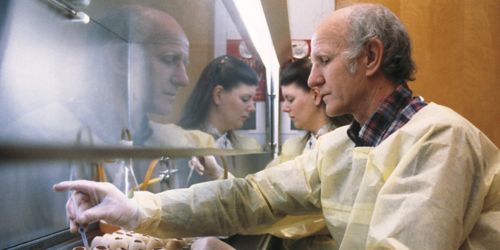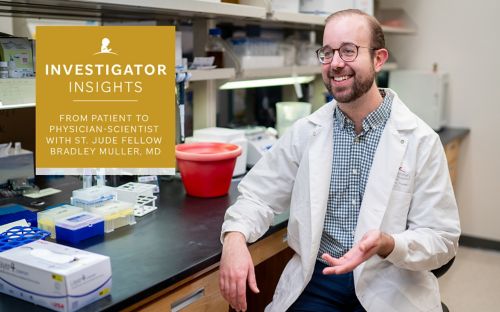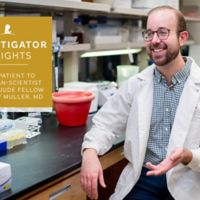Legendary flu hunter offers tips to stay healthy during a pandemic

Robert Webster, PhD, advised Hong Kong health officials when the avian flu virus, H5N1, started to spread from infected poultry to humans.
In his 65-year research career, virologist Robert Webster, PhD, has lived through three influenza pandemics and helped to avert several more. He’s also witnessed the emergence of the novel corona viruses that cause SARS, MERS and now COVID-19.
Webster is known and respected internationally as an authority on how viruses, particularly avian flu viruses, spread from animals to humans.
In 2003, when severe acute respiratory syndrome (SARS) surfaced in Asia, Webster flew to Hong Kong at the request of local health officials working to contain the outbreak. SARS spread to 12 countries before it was contained.
Five years earlier, Webster had advised Hong Kong health officials when the avian flu virus H5N1 started to spread from infected poultry to humans, causing illness and six deaths. He helped to convince Hong Kong authorities to act quickly to prevent the virus from taking an even greater toll.
Now in his 80s, Webster is emeritus faculty at St. Jude Children’s Research Hospital. He maintains an office on the St. Jude campus and is working on another book. He was a fixture on campus until COVID-19 prompted him to limit outside contacts and stay home with his wife, Marjorie.
COVID-19 vs. Influenza
The viruses that cause flu and COVID-19 are different, but the pathogens have some similarities, including their animal origins.
In the 1970s, Webster and his colleague Graeme Laver, PhD, established that the digestive tract of ducks and shorebirds are the major world reservoir of flu viruses.
The origins of SARS-CoV-2, the viruses that cause COVID-19, are the focus of intense research in labs around the world. Webster said evidence so far points to bats as a likely origin.
Avian flu viruses usually move through pigs or chickens on their way to infecting humans. These intermediary hosts serve as mixing vessels for human and bird flu viruses to swap genes. We saw the results in 2009 when the H1N1 flu virus, sometimes called the swine flu, emerged to cause the most recent flu pandemic.
Human-to-human transmission
Novel (new) viruses pose a threat because humans have not had a chance to develop immunity to them. Novel viruses are sometimes dangerous—think SARS—but they do not always cause pandemics, Webster said.
Pandemic viruses are novel viruses that acquire the ability to spread easily from human to human.
Scientists still don’t really understand what changes are required for human-to-human transmission. In flu, it is a multigene process involving polymerase genes as well as non-structural genes. These are the genes responsible for viral replication. For the flu virus to succeed in humans, it must be able to replicate in human cells, Webster said.
“Novel viruses must also overcome the cytokines generated as part of the innate immune response,” Webster said. “The innate immune response is part of the first wave of defense against infectious agents.
“As soon as you have human-to-human transmission, the situation is potentially extremely dangerous,” he added. “Some novel viruses cause no or only mild disease. But others, as we are witnessing now, are a serious threat.”
Flu hunter
Webster’s 2018 book Flu Hunter offers a window into his research.
At St. Jude, he led one of six World Health Organization influenza collaborating centers and the only one focused exclusively on the threat animal flu viruses pose to humans.
Webster helped establish a flu surveillance center in Hong Kong. That effort, funded by the National Institutes of Allergy and Infectious Diseases, has grown to include St. Jude in a network of six Centers of Excellence for Influenza Research and Surveillance. St. Jude serves as a hub of basic and clinical research aimed at understanding and responding to influenza.
He also led efforts to develop a simpler, faster and less expensive approach to flu vaccine development.
Staying healthy in a pandemic
Webster has spent his career in the lab and in the field, studying pandemic flu viruses, some with death rates approaching 30%. He has, thankfully, stayed healthy by being prepared.
“A lifetime of training in infectious diseases makes you take preparedness seriously,” he said. “I am a longtime advocate of vaccination, including the annual flu shot.
“I cannot stress enough the importance of handwashing. During my stay in Hong Kong during the SARS outbreak, whenever I came in from outside or returned to the hotel at the end of the day, I washed my hands. You must wash your hands for at least 20 seconds. Twenty seconds is a long time, and most people don’t wash them long enough.
“I also take science seriously, including recommendations from public health officials. When infectious disease professionals tell you to practice social distancing and stay home, we do.”






